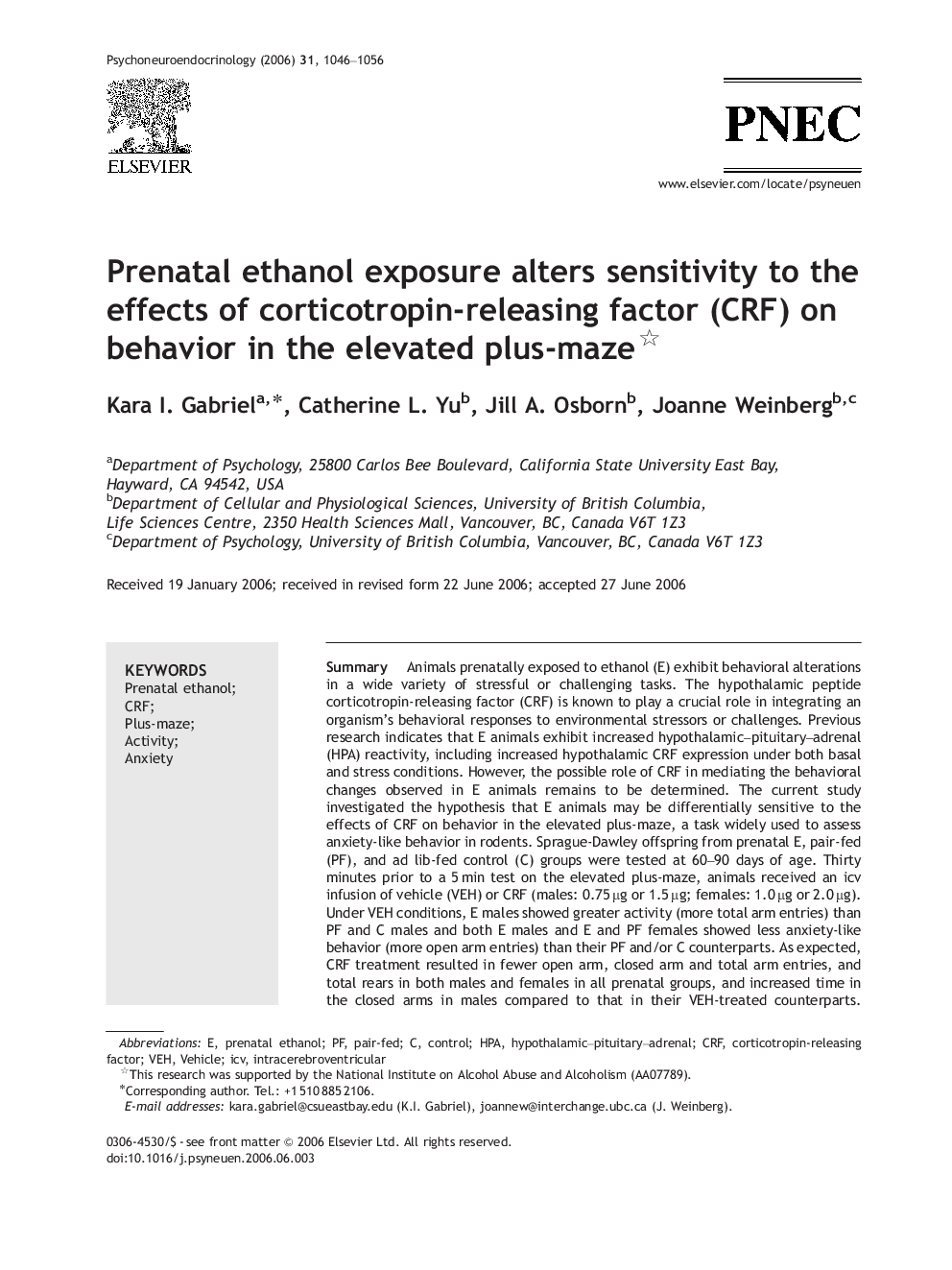| Article ID | Journal | Published Year | Pages | File Type |
|---|---|---|---|---|
| 337242 | Psychoneuroendocrinology | 2006 | 11 Pages |
SummaryAnimals prenatally exposed to ethanol (E) exhibit behavioral alterations in a wide variety of stressful or challenging tasks. The hypothalamic peptide corticotropin-releasing factor (CRF) is known to play a crucial role in integrating an organism's behavioral responses to environmental stressors or challenges. Previous research indicates that E animals exhibit increased hypothalamic–pituitary–adrenal (HPA) reactivity, including increased hypothalamic CRF expression under both basal and stress conditions. However, the possible role of CRF in mediating the behavioral changes observed in E animals remains to be determined. The current study investigated the hypothesis that E animals may be differentially sensitive to the effects of CRF on behavior in the elevated plus-maze, a task widely used to assess anxiety-like behavior in rodents. Sprague-Dawley offspring from prenatal E, pair-fed (PF), and ad lib-fed control (C) groups were tested at 60–90 days of age. Thirty minutes prior to a 5 min test on the elevated plus-maze, animals received an icv infusion of vehicle (VEH) or CRF (males: 0.75 μg or 1.5 μg; females: 1.0 μg or 2.0 μg). Under VEH conditions, E males showed greater activity (more total arm entries) than PF and C males and both E males and E and PF females showed less anxiety-like behavior (more open arm entries) than their PF and/or C counterparts. As expected, CRF treatment resulted in fewer open arm, closed arm and total arm entries, and total rears in both males and females in all prenatal groups, and increased time in the closed arms in males compared to that in their VEH-treated counterparts. Importantly, the effects of CRF were most pronounced in E animals. That is, when normalized for prenatal group differences following VEH treatment, CRF-treated E males showed fewer total arm entries and total rears than PF and C males, and CRF-treated E and PF females showed fewer open arm entries than C females. These results support and extend previous findings demonstrating that E animals show altered behavior in aversive or stressful situations. While some effects of CRF in females may be mediated partially by nutritional effects of ethanol, the data overall suggest that the behavioral alterations observed in E animals may be due, at least in part, to increased sensitivity to CRF.
